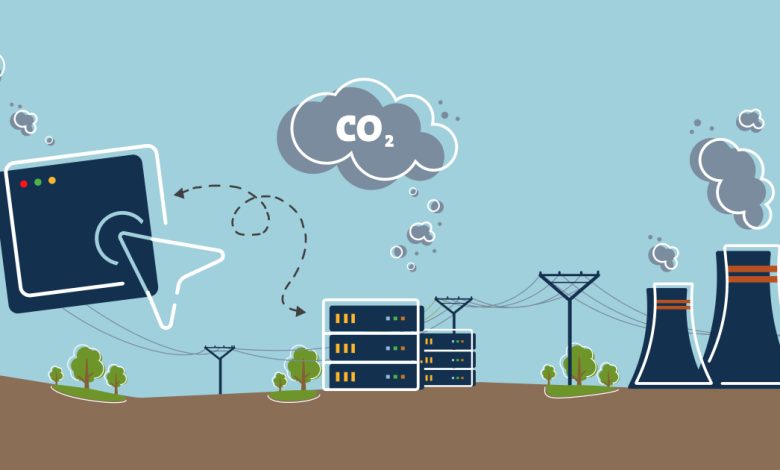The carbon footprint of a click on

A single click can feel as light as a feather. But have you ever thought about the carbon footprint behind this simple action? Every online search, purchase, or scroll has a hidden environmental cost. As e-commerce continues to grow, it is more crucial than ever to understand and mitigate this impact.
What’s wrong with one click?
The carbon footprint of a click refers to the greenhouse gas (GHG) emissions caused by each digital interaction. This includes the the energy used to power your website, devices used by shoppers, data centers hosting your platform, and network infrastructure which allows data to travel around the world.
Every time you click a link, watch a video, or load a page, your request travels through the Internet’s complex network of servers, data centers, and networks. Even though a click produces a tiny amount of emissions, billions of daily clicks add up to a significant impact.
Click, click, carbon
Let’s be a little more concrete. On average, only one Google search emits around 0.2 grams of CO2. Although this may seem minimal, consider that Google processes more than 3.5 billion searches per day. It’s approximately 700,000 kilograms of CO2 per day just from search queries!
And it’s not just about research. Every action we take online, from sending an email to browsing social media, contributes to our digital carbon footprint. The same goes for e-commerce: the entire user journey, from search to payment, also adds to this environmental impact.
E-commerce and carbon footprint
E-commerce sites are particularly interesting when it comes to their carbon footprint. Every time you browse products or click on images, the servers consume energy and generate emissions. As online shopping grows, it is crucial to be aware of how our clicks add up and to support greener practices whenever we can.
Here are some examples of how common e-commerce actions contribute to the carbon footprint:
Product searches: Every time a customer searches for an item, data is transmitted and processed by servers. For larger product catalogs, advanced search algorithms further increase power consumption.
Website Visits: Loading a product page triggers several server requests. More complex websites with heavy graphics, videos, or interactive features consume even more power with each visit.
Customer service: Live chat support systems and help desk services running in the background increase website power consumption.
How can e-commerce businesses make a difference?
You may be wondering, “What can I do to mitigate my site’s carbon footprint?” » Good news: there are several steps you can take!
Optimize your website: Faster websites use less power because they require fewer server resources. Compress images, use efficient coding practices, and reduce unnecessary scripts.
Simplify the shopping experience: Fewer clicks means fewer emissions. Streamline your navigation and checkout processes to reduce the number of steps a customer needs to complete a purchase.
Use energy-efficient web hosting: Choose web hosting providers that prioritize renewable energy or have carbon-neutral initiatives. Many hosting companies offer eco-friendly web hosting plans that offset emissions
The Hyvä theme: speed meets sustainability
As we mentioned above, one way to reduce an ecommerce site’s carbon footprint is to improve its speed and efficiency. THE Good theme is a game changer in this regard. It is a modern frontend framework designed specifically for Magento 2 and focused on performance optimization.
Quite significantly reduces page loading times by simplifying the code structure and eliminating unnecessary scripts and libraries. This improvement in speed directly correlates to a lower carbon footprint because it minimizes the time it takes for data centers to process and deliver content to users.
Not just words, but actions
We were able to see for ourselves how Hyvä can reduce the environmental impact of a site. While working on the Hajduk Split online storewhich runs on the Hyvä theme, our main goal was to ensure that the site performed at its best.
And the results speak for themselves:
Desktop page speed: 58.45% faster
Mobile page speed: 40% faster
Carbon footprint: 48% lower
Do we have to choose between environment and performance? Certainly not! These results show that improving performance can actually make things more energy efficient, proving that being eco-friendly can align perfectly with your business goals. With Hyvä, you are not only improve the user experience – you’re also doing something good for the planet!
The essentials
Although it may seem trivial, the carbon footprint of a click adds up quickly. As e-commerce continues to grow, it is essential that consumers and businesses are aware of their digital impact on the environment. By taking steps to optimize websites and promoting sustainable behaviors, we can all contribute to a greener planet – one click at a time.



